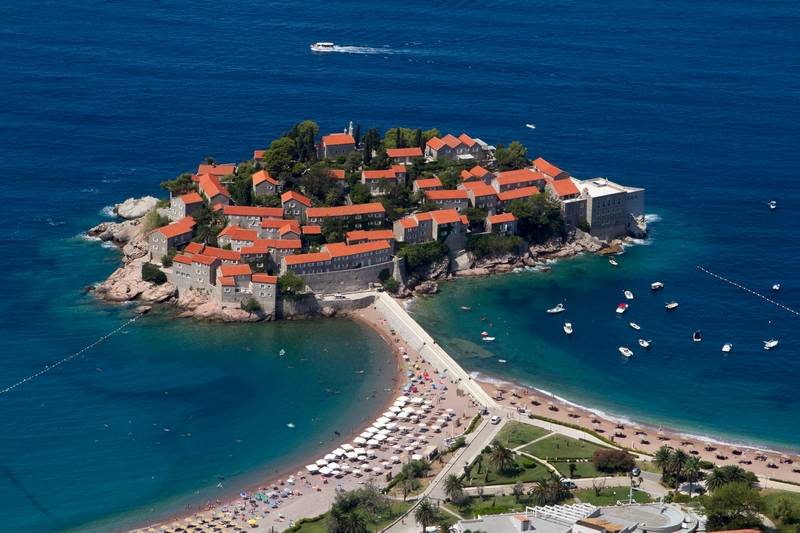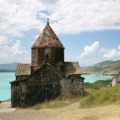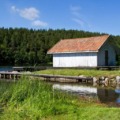Montenegro, in the heart of the Balkans, captivates visitors with its breathtaking natural beauty and rich cultural heritage. Known for its rugged mountains that plunge into the Adriatic Sea, this small yet diverse country boasts an enchanting blend of picturesque landscapes, from the dramatic Bay of Kotor with its fjord-like appearance to the pristine beaches along the coastline. Steeped in history, Montenegro showcases a tapestry of influences, evident in its medieval villages, ancient monasteries, and well-preserved Venetian architecture. Beyond its stunning scenery, Montenegro offers a warm hospitality, enticing cuisine, and a wealth of outdoor adventures, making it an alluring destination for travelers seeking both tranquility and adventure amid a uniquely charming setting.
Budva
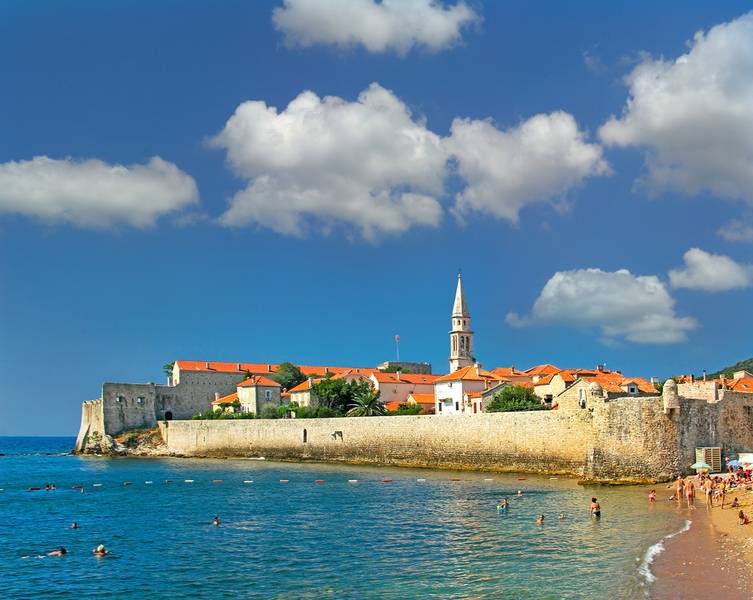
pecold/shutterstock
Budva, a coastal gem located along the Adriatic shores of Montenegro, is a vibrant town that harmonizes ancient history with a lively modern atmosphere. Renowned for its stunning beaches and a captivating old town enclosed within Venetian walls, Budva effortlessly marries the allure of a seaside resort with historical charm. Its cobblestone streets wind through a maze of centuries-old buildings, housing quaint shops, charming cafes, and bustling restaurants. The town’s picturesque Riviera draws visitors seeking sun-soaked days by the azure waters, while cultural enthusiasts are captivated by Budva’s historical monuments, including the citadel, churches, and museums.
Durmitor National Park
 Tara Canyon. maria-grin/shutterstockPlay |
Durmitor National Park, nestled in the mountainous northwestern region of Montenegro, is a pristine wilderness renowned for its natural beauty and diverse landscapes. Home to the magnificent Durmitor mountain range, glacial lakes, deep river canyons, and dense pine forests, this UNESCO World Heritage Site is a haven for outdoor enthusiasts and nature lovers alike. The park boasts the dramatic Tara Canyon, Europe’s deepest canyon, and the ethereal Black Lake, surrounded by picturesque trails ideal for hiking and exploring. Durmitor offers thrilling outdoor activities such as rafting, mountain biking, and winter sports, making it a year-round destination for adventurers seeking both adrenaline-pumping experiences and serene natural vistas.
Ostrog Monastery
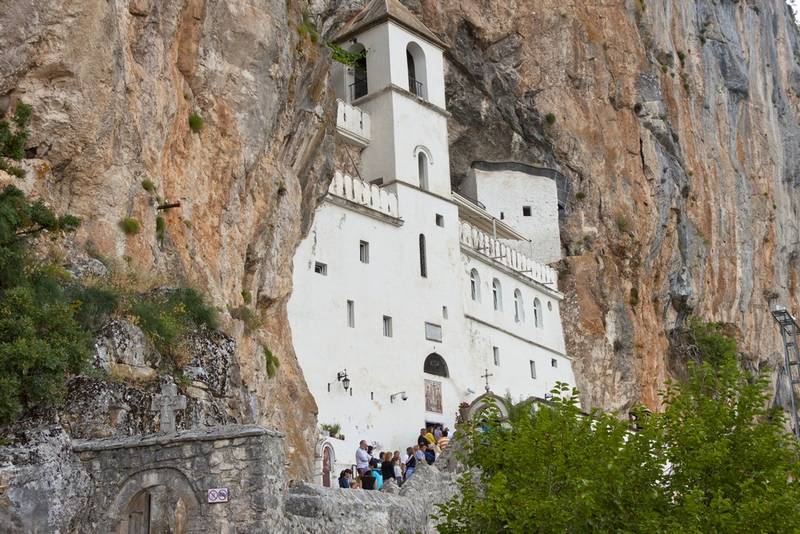
doin-oakenhelm/shutterstock
Ostrog Monastery, a spiritual sanctuary perched dramatically within the rugged cliffs of Montenegro, stands as a testament to faith and architectural marvel. Carved into sheer rock faces high above the Zeta Valley, this revered Serbian Orthodox monastery is a sacred pilgrimage site attracting visitors from around the world. Divided into upper and lower sections, the monastery complex includes churches, chapels, and monk cells, preserving centuries of religious history and cultural heritage. The Upper Monastery, dedicated to St. Basil of Ostrog, showcases stunning frescoes and relics, drawing devout pilgrims and curious travelers alike seeking solace, spiritual reflection, and a glimpse into the revered traditions of Eastern Orthodox Christianity.
Kotor
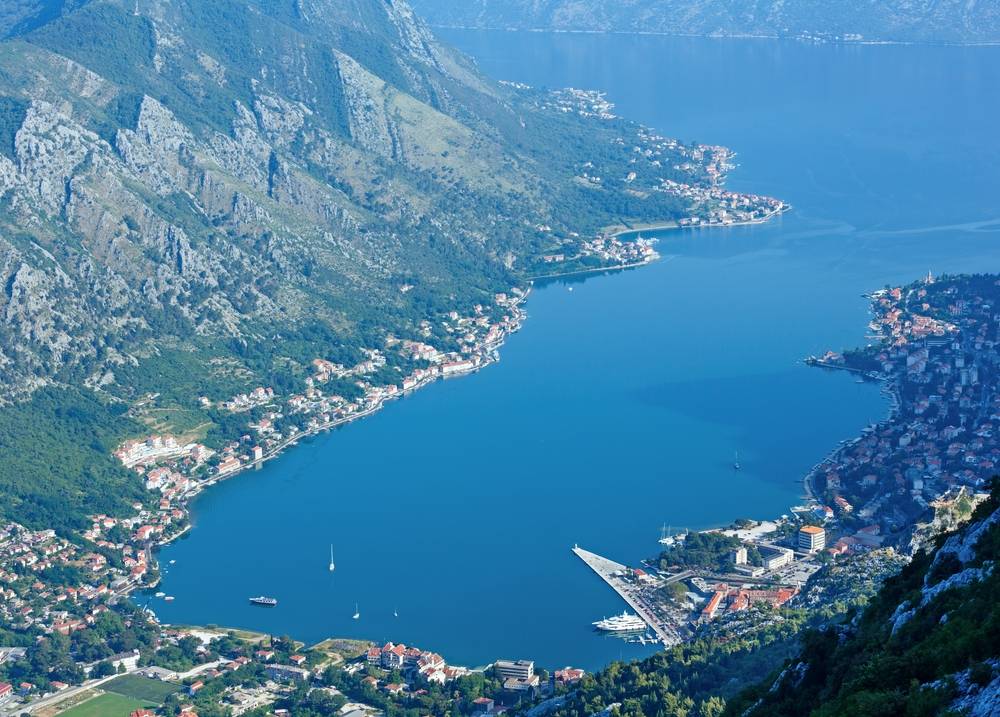
brykaylo-yuriy/shutterstock
Kotor, situated at the southern end of the Bay of Kotor, is a mesmerizing blend of medieval charm and natural splendor. Enclosed by ancient walls and surrounded by dramatic mountains, this UNESCO-listed town boasts a rich history evident in its well-preserved Venetian architecture, narrow cobblestone streets, and historic squares. The stunning Bay of Kotor, often referred to as Europe’s southernmost fjord, provides a breathtaking backdrop to the town’s picturesque setting. Visitors can explore landmarks like the Cathedral of Saint Tryphon, stroll through the labyrinthine alleys of the old town, and ascend the fortified walls to get panoramic views of the bay and its surroundings.
Sveti Stefan

zhenia-vyazankina/shutterstock
Sveti Stefan, an iconic islet situated along Montenegro’s Adriatic coastline, embodies exclusivity and charm. Once a quaint fishing village, it’s now a luxurious resort destination renowned for its stunning beauty and historic significance. Connected to the mainland by a narrow causeway, the island is adorned with 15th-century stone buildings that have been converted into elegant residences, boutique hotels, and restaurants. The red-tiled roofs and cobbled streets exude a romantic allure, while the surrounding turquoise waters and golden sand beaches enhance its allure. Sveti Stefan remains a symbol of luxury and elegance, attracting discerning travelers seeking a serene retreat amid breathtaking coastal vistas and world-class hospitality.


